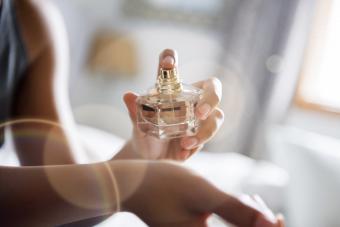
If you're interested in artificial nails, the following step by step acrylic nails instructions will help you better understand the process of creating, filling, and maintaining the nail bed.
A Look At Step By Step Acrylic Nails
Many women opt for artificial nails rather than natural. Some women prefer them because of their durability and strength, while others adore them for their length and beauty. No matter the reason, artificial nails are a commitment that also need maintenance about every two weeks to look their best. Whether this is your first time having acrylic nails applied, or you're just curious about the process, the following step by step acrylic nails instructions may help you decide if they're right for you.
Clean and Trim
Before an artificial tip can be applied, the natural nail bed has to be clean and dry. If you visit a professional manicurist, your nails will be filed, and your cuticles will be pushed back with an implement known as a cuticle pusher. Dead cuticle debris will then be removed from the edge with a cuticle nipper. Removing the old cuticle and pushing it back will create a more attractive nail bed and will also help nails look longer. Once the nail bed is clean and dry, nail tips may be applied.
Tips or No Tips?
For women who are satisfied with their natural nail length, applying an artificial tip may not be necessary. The gel and powder can be applied directly over the nail bed to strengthen and thicken the natural nail. For those opting for length, a faux nail tip is the next step. The nail tip that best matches your nail shape and width will be used.
Applying Liquid and Powder
Once the nail tip is selected, it's time to adhere the tip to the nail bed. Two small glass jars will normally hold both the monomer (liquid) and the polymer (powder) acrylic for easy access and application. The manicurist will then dip a small brush into both formulas and apply a small bead of acrylic on the nail and tip, working quickly to build up and blend the two nails (natural and tip). This is the most difficult part of artificial nail application. If the formulas are applied incorrectly, the nail may appear lumpy, too thick, or crooked.
File and Buff
Once the acrylic has been applied, the nail should be buffed and filed to the desired shape and length. Buffing the nail will also help remove any remaining acrylic debris.
Paint and Polish
After the nail has been applied, it's time to find a nail polish color of your choice. Many women who finally have the long nails they've desired opt for a classic French manicure. Others choose from a broad spectrum of red, berry or neutral shades. Whatever color you select, rest assured nail polish adheres to false nails much longer than natural nails, meaning your nails are going to look great for a longer period!
Maintenance
As the natural nail grows beneath the surface of the artificial nail, the tip and the acrylic layer will grow out, exposing a natural ridge close to the cuticle. This visible line of demarcation requires an acrylic fill roughly every couple weeks to reapply the acrylic and blend the old tip with the new outgrowth. Salon visits can be costly. Check around in your area for the best quality and price for your fills.
Life After Acrylic
Although applying acrylic nails has many benefits, the underlying nail will suffer and weaken as a result of restricted oxygen and the harsh chemicals. When you're ready to remove your acrylic nails, visit a professional to avoid further damage to the nail bed.
Acrylic nails can be a great option for those who have brittle and weak nails and long for thick, perfectly manicured hands. For those who already have a perfect set of nails, regular manicures, nail care and filing will help keep your nails natural and beautiful without the need for acrylic.







